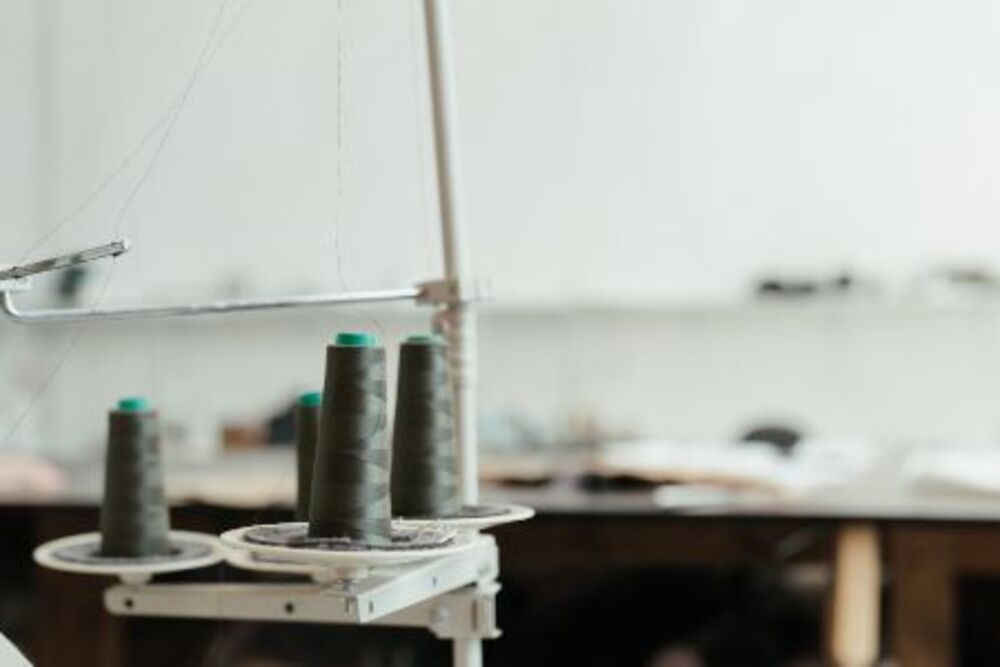Discovering the basic components of a sewing machine will allow you to effectively use and repair it. A needle is a pointed metal rod with a hole at its end that transports threads for stitching purposes.
A bobbin holds thread that rests beneath an upper thread. When pulled through with the needle hook, this bobbin thread interlocks with its counterpart on top thread, creating an interlocked structure between them both.
Feed Dogs
Feed dogs are metal ridges found beneath the needle plate of your sewing machine that grab fabric from its base and move it forward and backward to guide the presser foot during sewing.
Reduced feed dogs will help ease fabric tension during free-motion quilting or embroidery projects. Be sure to read your machine manual for instructions on how to access this feature if it exists on your machine and how best to implement it. Know more about the best embroidery machine for beginners.
Needle Plate
Needle plates (sometimes known as throat plates) are metal plates designed to sit beneath a needle and presser foot and contain small holes through which stitches can pass, enabling stitching. Some plates feature wider openings for creating zig-zag stitches while others, like straight stitch needle plates, offer narrower ones only.
Lint, dirt and thread may become lodged here. To keep it clear and comfortable for visitors, regularly cleaning this area and applying a light layer of oil as necessary could prove useful.
Bobbin Cover
A bobbin cover helps protect bobbin cases from dust and debris build-up while helping ensure uniform thread flow for improved sewing accuracy.
These top loading bobbin machines utilize this mechanism for releasing thread from its pin holding the spool of thread in place. Usually housed behind a clear plastic cover labeled either “front” or “side”, this piece provides more details on bobbins. See this post for further insight!
Thread Guide
As a beginner sewer, it’s essential to understand how the thread guide operates. This tool keeps bobbin thread in its place while making its way toward the needle.
One needle bar thread guide comprises an introducing portion 26e and threading portion 26f continuous with it, the latter of which has been bent upward at its rear edge.
Thread Spool Cap
Sewing machines can break at the most inconvenient moments, delaying your project until a replacement part can be located. DIY solutions like craft foam may work temporarily; it would be wiser, however, to have some spare spool caps ready just in case they should ever break again.
These small plastic parts fit onto the end of thread spools to keep thread tangle-free as you sew. Selecting an appropriate cap size for your thread spool should give optimal results.
Thread Tension Discs
Thread tension discs work to squeeze thread as it passes between them, with an upper thread tension regulator controlling how much pressure is applied to it. To get optimal upper thread tension results, the correct upper thread tension setting should allow some slippage from bobbin case spring after receiving a gentle jolt to prevent slippage of tension discs and thread tension regulator.
Check for any lint or thread ends under the throat plate or around the bobbin case, as these could create imbalance and poor quality stitching.
Needle Clamp
If your needle keeps falling out of its clamp, it may need replacing and/or cleaning out as there may be build-up in its holder.
The needle clamp is placed between the parallel needle bar and presser bar to prevent it from becoming lost, yet can easily be moved and adjusted to accommodate different types of needles.
Bobbin Winder
Typically located above the thread spool, bobbin winders help maintain tension as you fill your bobbin with thread. They also lock into place so you can quickly remove your filled bobbin and resume sewing without delay.
If your machine makes a knocking sound when used, try cleaning any lint from underneath the needle plate or bobbin area to see if that helps resolve the issue. Also be sure that it has an appropriate bobbin for its model number.
Thread Winder Belt
Most sewing machines feature an integrated bobbin winding system to save time by eliminating the need for manual winding of bobbins. These devices make sewing faster by eliminating this step from their daily workflow.
Before using your sewing machine, please read and heed any specific care instructions included with it. Most machines require regular maintenance such as cleaning and oiling to maintain optimal functioning – brush away lint and dust regularly and add drops of oil as necessary.
Needle Threader
Needle threaders are devices designed to make threading needles simpler, whether manually or with sewing machines. Needle threaders can be especially beneficial for people who struggle to see clearly or who lack manual dexterity. They may be particularly helpful for individuals who have limited sight or manual dexterity issues.
These devices feature a thin wire “eye” that collapses to fit through even the smallest needle eye and blades that cut thread.
